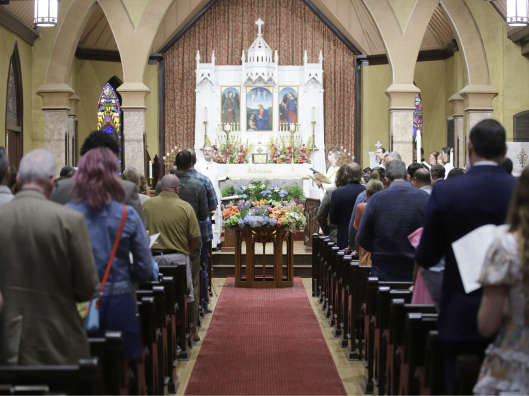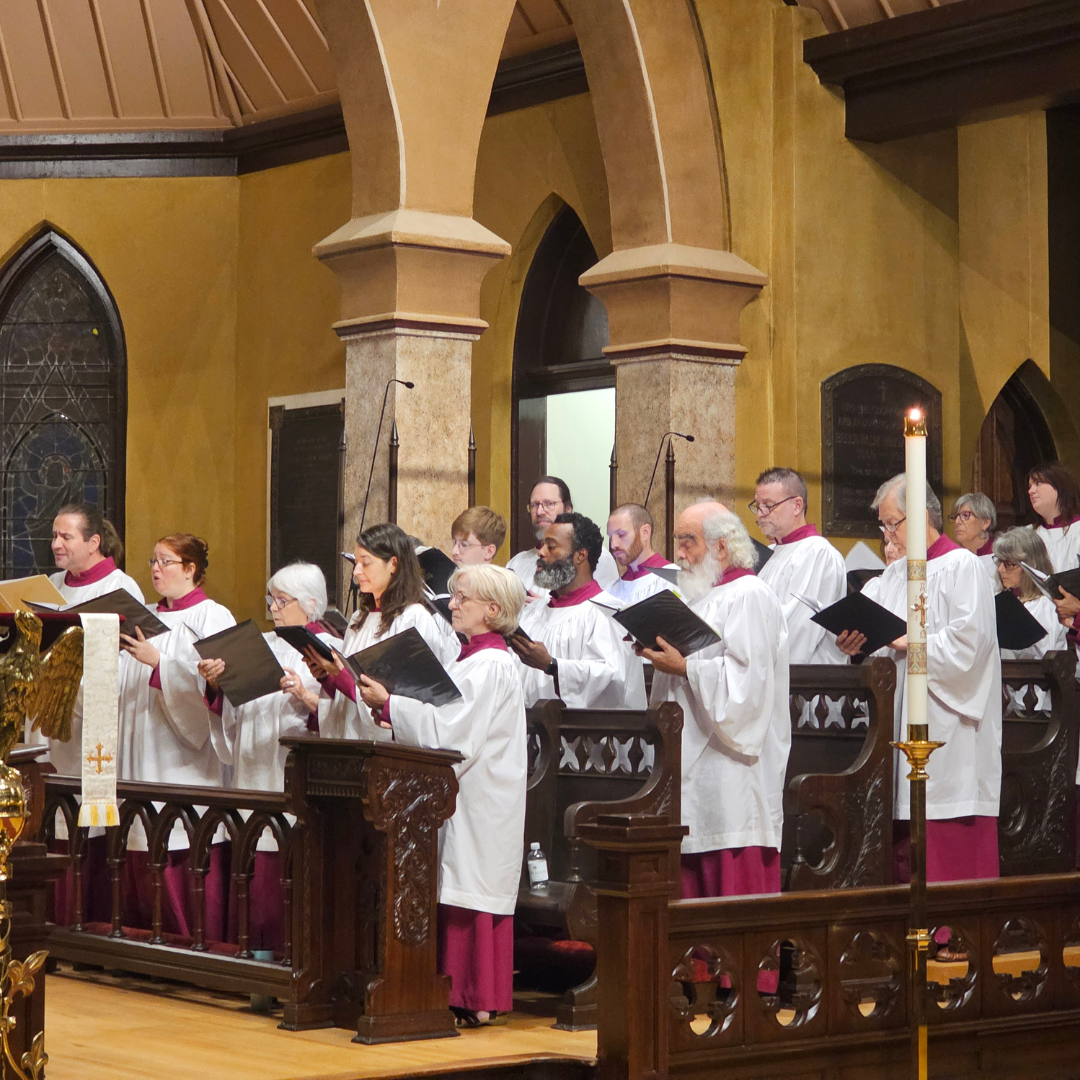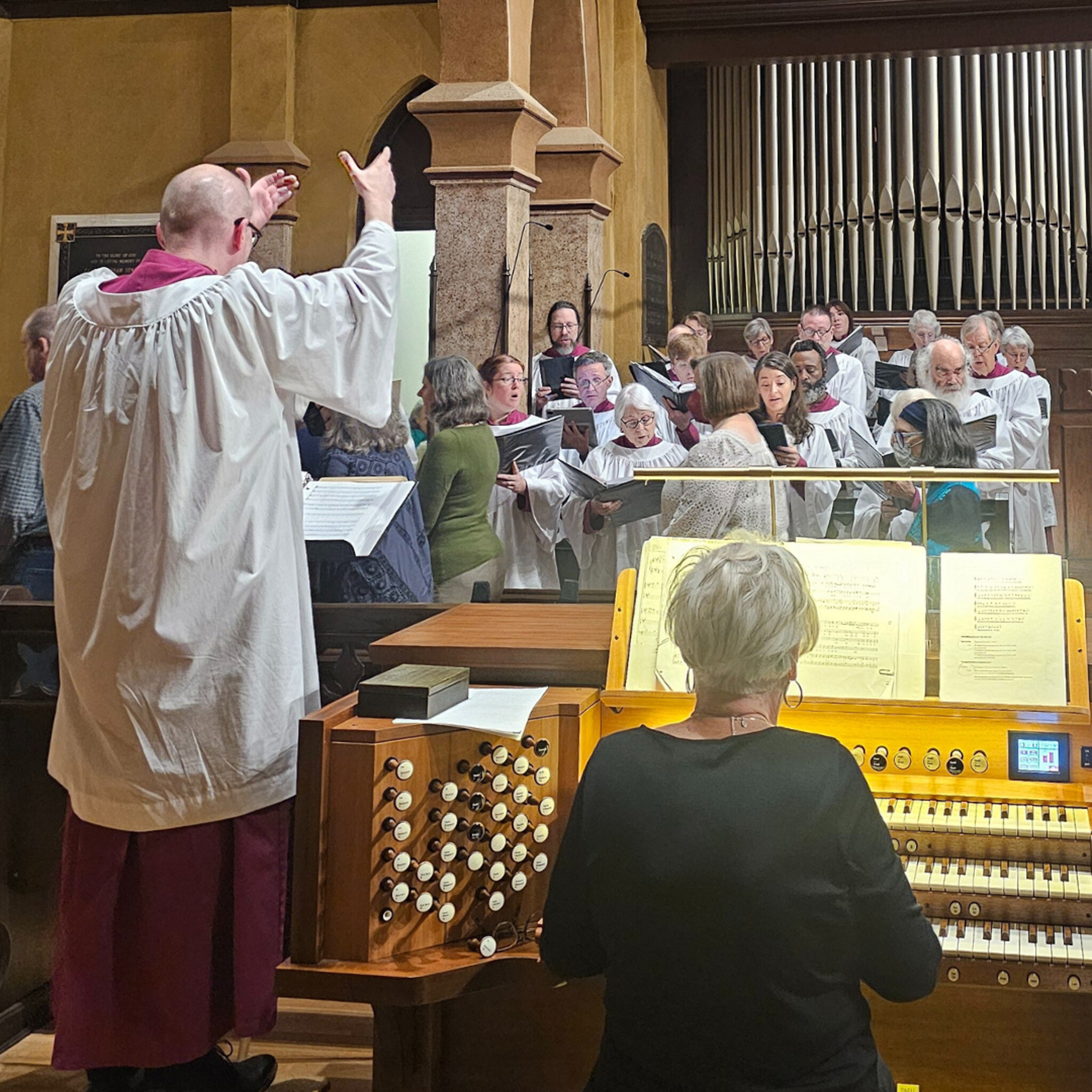
EASTER SUNDAY – APRIL 20
7:30 AM – Holy Eucharist, Rite I
9 AM – Holy Eucharist, Rite II
11:15 AM – Holy Eucharist, Rite II, livestreamed
Two more hymns by the early medieval hymnists introduced in the notes for the preceding days appear on Easter Day.
St John of Damascus, who also wrote the hymns we know as ‘Come, ye faithful, raise the strain’ [200] and ‘Thou hallowed, chosen morn of praise’, was the author of ‘The day of resurrection’ [210], which we sing at Communion. The two latter texts come from a longer hymn called the ‘Golden’ Canon (the Canon being a type of Greek hymn), considered one of the greatest of all Greek hymns. All three were translated, quite closely, by John Mason Neale, the great nineteenth-century Church of England writer, translator, scholar, and priest, who was in a way the heir of the earlier writer, hymnist, and theologian.
Venantius Honorius Clementianus Fortunatus, Italian by birth, was a poet–hymnographer to various Frankish kings in the later sixth century, and later Bishop of Poitiers. His classical Roman education allowed him to write lengthy poems in many traditional forms; a selection of couplets from Carmina 3.9, written for the Frankish Bishop Felix of Nantes around 570 on the occasion of the baptism of a group of Saxons, forms the hymn we know as ‘Salve festa dies’, found in two different translations in our Hymnal: ‘Hail thee, festival day’ [175] and ‘“Welcome, happy morning,” age to age shall say’ [179]. The poet writes as though he is present at the occasion of the baptism – just at daybreak on Easter Day – at which precise moment the coming of spring, of the dawn, of the triumphant Christ (creation itself playing the role of the cheering crowd), and of the new life bestowed in the sacrament coincide in liturgical time. The chant melody traditionally associated with the text having been thought unsuited to modern congregational use, tunes by Ralph Vaughan Williams [175] and Arthur Sullivan [179] have been supplied, though the pomposity and triviality, respectively, of these two pieces of Edwardian and Victorian music can hardly be called liturgical in spirit.
A stronger piece of music from the same era (nevertheless partaking of the same imperial spirit and perhaps better suited to sacred concert use), also setting a hymn though not in musically strophic form, is Stanford’s anthem ‘Ye choirs of new Jerusalem’, which the choir sings at Communion. The text is a revision of Robert Campbell’s translation of ‘Chorus novae Jerusalem’, attributed to Fulbert, Bishop of Chartres in the eleventh century. Stanford’s effective setting highlights a number of moments in the text: ‘and cries aloud through death’s domains / to wake the imprisoned dead’ is set to a long, rising musical passage, with the latter line repeated beginning with soprano and tenor, unaccompanied, on high G’s; a transition to the relative minor key portrays ‘devouring depths of hell’, while a suddenly quiet and unaccompanied passage sets, as it were awe-struck, ‘to him in one communion bow / all saints in earth and heaven’. The material introduced in the minor mode returns, now in the main key of G Major, to set the concluding doxology, while the opening stanza is used as a sort of refrain throughout, allowing the formally useful return of the vigorous opening musical material at strategic points in the piece.
Our Offertory anthem is a setting of part of yet another hymn, ‘Victimae paschali laudes’ [183], the Sequence (a kind of hymn) for Easter dating from the eleventh century. Francisco López (later signing himself Capillas, ‘of the Chapels’, by which epithet he is known today) was an important seventeenth-century Mexican composer (the first notable composer in European style born in the colony) and organist, active in the cathedrals of the cities of Puebla and México at a time when Spanish-style choirs and organs were being established and built in and around colonial centers such as these. ‘Dic nobis Maria’ is the portion of the Sequence addressed to Mary Magdalene, drawing upon Matthew 28 and John 20: each verse of Capillas’s setting begins with ‘Tell us, Mary, what did you see on your way?’, to which soloists answer: the tomb, the glory of the risen Christ, the angels, the shroud. The fourth verse sets Mary’s further answer, echoing the angelic announcement: ‘Christ my hope has arisen: he has gone to Galilee before you.’ A splendid Alleluia serves as an antiphon to these verses.
‘Alleluia’ or ‘Hallelujah’ (Hebrew for ‘praise the LORD’) is heard throughout the music of the service, from the threefold Alleluia serving as Psalm-refrain (the music taken from the hymn ‘O sons and daughters, let us sing [203/206]), to the refrain of the Fraction anthem (set to the tone historically associated with Psalm 114, possibly rooted in Hebrew chant), to the end of Stanford’s anthem, to the antiphon of our second Communion hymn, ‘The strife is o’er’ [208], to the constant interjection in our closing hymn, ‘Jesus Christ is risen today’ [207]. This ancient acclamation appropriately echoes throughout Eastertide.





Login To Leave Comment